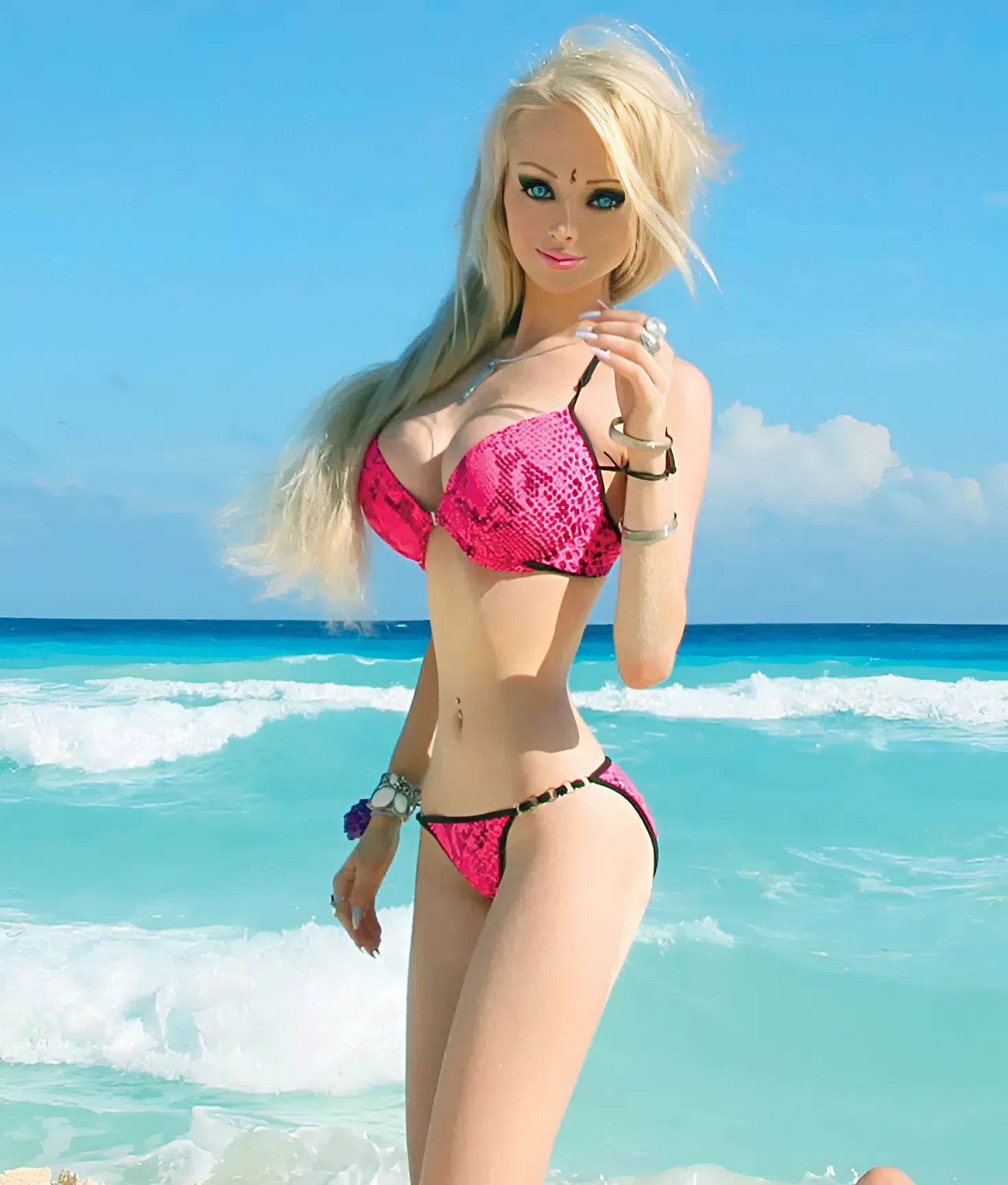Valeria Lukyanova has been a figure who has sparked curiosity and controversy for many years. To some, she embodies the ultimate ideal of beauty—mesmerizing, almost surreal, with an allure that borders on fantasy. To others, she symbolizes the extremes of artificiality and obsession with perfection. Her name is often tied to the image of the “living Barbie doll,” a nickname she’s come to accept, even if she insists it’s an exaggeration. Still, there’s no denying that her appearance is astonishing and has posed questions about beauty, self-image, and the lengths people are willing to go to achieve their ideal.
She has large, captivating blue eyes that seem almost too perfect, balanced by a slender waist and long, flowing blonde hair. Her facial features—sharp cheekbones, a delicate nose, and full lips—make her resemble a doll or a porcelain figurine. These striking traits have made her a frequent subject of social media buzz, magazine spreads, and online debates. Walking a fine line between admiration and criticism, Valeria’s looks seem to challenge conventional standards of natural beauty.

Throughout her career, Valeria has always been clear about her approach to her appearance. She emphasizes that her use of plastic surgery has been minimal—she admits to having breast augmentation, but insists that everything else comes from her dedication to strict dieting, regular exercise, and an unyielding discipline. She insists her body is a result of hard work, control, and a focus on inner discipline. She often talks about a holistic approach to beauty—one that involves not only physical training but also mental and spiritual work.
However, many skeptics remain unconvinced. The proportions of her body seem almost impossible to be achieved solely through natural means. Her slender waist, in particular, has become a subject of debate; some believe that her body has been heavily manipulated. Despite the skepticism, Valeria remains confident, asserting that her secret is self-control and a deep work on herself—inner and outer. She claims her beauty is rooted in a strict regime of disciplined dieting, meditation, and a commitment to her personal growth.
Aside from her striking appearance, Valeria is also a creative force. She performs under the pseudonym Amatue, a name inspired by her fascination with spirituality and reincarnation, and she has launched numerous projects that go beyond modeling. She writes music, often blending her artistic talents with her esoteric beliefs, and she gives lectures on topics related to spiritual development, reincarnation, and other metaphysical ideas. Her speeches and writings attract a diverse following—some genuinely inspired by her ideas, others who dismiss them as pseudoscience.
The reactions to Valeria are just as diverse as her projects. Many admire her courage and her ability to turn her image into a global brand. She’s an example of how pushing boundaries and reinventing oneself can capture worldwide interest. Her boldness in shaping her own identity has made her an icon for those who believe in personal transformation and the power of self-determination.
On the other hand, critics accuse her of excessive artificiality and detachment from reality. Some argue her look isn’t sustainable or even healthy in the long run, questioning whether her obsession with perfection is a form of escapism or a consequence of societal pressures. But regardless of how people perceive her, complete indifference is rarely seen—she continues to be a figure that provokes discussion, challenges perceptions, and invites us to think about what genuine beauty really means.
Valeria Lukyanova’s story is far from simple. It’s a story of beauty, obsession, spirituality, and the desire to push beyond limits—whether societal or personal. She’s a reminder that personal choice can take us to extraordinary, sometimes controversial, places. Whether admired or criticized, her journey sparks curiosity and conversation about beauty standards, self-control, and the essence of living authentically in a world obsessed with perfection. And no matter where you stand, it’s impossible to ignore the fact that she has, in her own way, changed the way we see beauty in the modern age.





